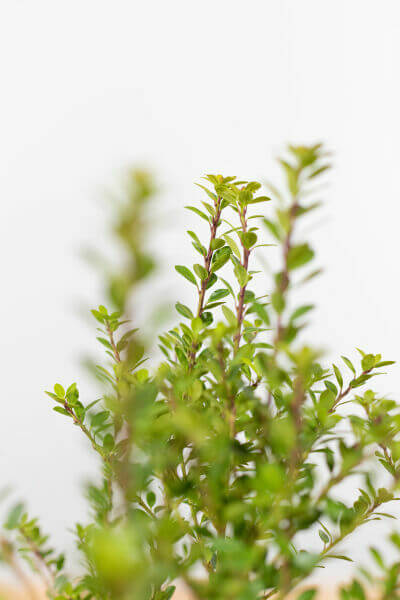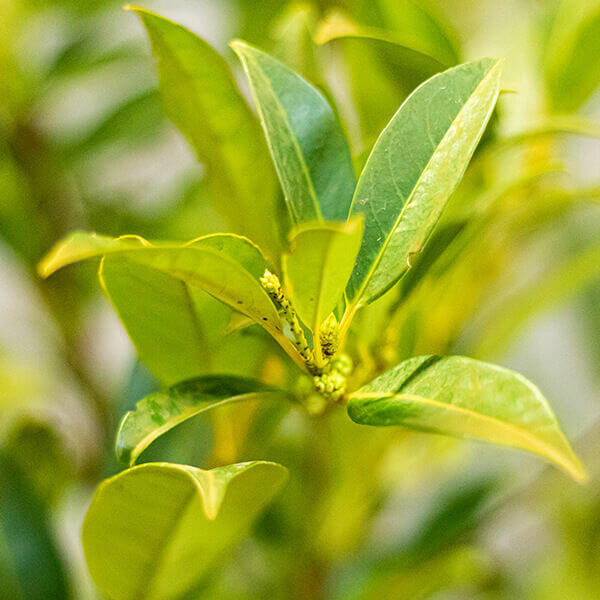Flowering Hedge Plants For Colorful Borders
Flowering Hedge Plants For Colorful Borders
Blog Article
Best Hedging Plants For Perimeter Hedges
Boost your garden's allure with lavish hedge varieties such as Yew (Taxus), Thuja, Laurel, Photinia, and Bamboo, celebrated for their structural stability and ecological benefits.
Yew and Thuja provide evergreen protection and winter durability, while Laurel offers fast development and broad, fragrant leaves.
Photinia adds seasonal appeal with its vibrant red foliage, and Bamboo provides a low-maintenance, tranquil ambiance.
These hedges enhance air quality, decrease sound, and create tranquil, personal spaces.
Correct planting, spacing, and maintenance guarantee vigorous growth and eco-friendly harmony.
Explore how these lavish varieties can elevate your garden's beauty and wellness.
Secret Takeaways
Transform Your Garden With Lush Hedge Varieties
- Select Yew for its thick, evergreen development and unrivaled longevity.
- Select Laurel for its quick growth and broad leaves, guaranteeing fast personal privacy.
- Choose Photinia for its vibrant seasonal foliage, which turns a striking dark red.
- Make use of Bamboo for a low-maintenance, winter-hardy hedge with aesthetic appeal.
- Space plants 2-3 per meter and prune regularly for ideal growth and health.
Popular Hedge Plants
When transforming a garden with rich hedge ranges, it's important to think about popular hedge plants such as Yew, Thuja, Laurel, and Photinia due to their unique qualities and advantages.
Yew (Taxus) is extremely respected for its durability and thick, green development, making it a prime option for withstanding landscapes.
Thuja is noted for its evergreen foliage and robust winter durability.
Photinia adds seasonal vibrancy with red leaves that darken in time, producing dynamic visual appeal.
Laurel offers quick development and fragrant, broad leaves, ideal for fast personal privacy.
Furthermore, Bamboo is an outstanding choice for ambiance, using a low-maintenance, winter-hardy alternative that improves the garden's aesthetic with its elegant, swaying canes.
These choices accommodate a variety of horticultural requirements and choices.
Benefits of Garden Hedges
Garden hedges provide a wide variety of benefits, making them an important addition to any landscape. These natural barriers are cost-efficient to execute and provide substantial wind defense, enhancing air flow and contributing to noise decrease. The dense foliage of hedges like Thuja and Beech makes sure personal privacy by obstructing presence, producing a secluded and tranquil environment.
Hedges also play a vital role in microclimate guideline, offering a steady environment that promotes plant development and lessens temperature changes. Their detailed leaf structures filter pollutants, improving air quality and adding to a healthier garden community.
Moreover, hedges stand out in noise decrease, soaking up and deflecting sound waves to lower ambient sound levels. This dual performance of providing both visual and acoustic privacy boosts the overall serenity and visual appeal of any garden.
Planting and Upkeep Tips
For an effective hedge, meticulous preparation of the planting area is important. Ensure the soil has proper pH and drainage to support strong root advancement.
Area the plants properly for the picked types. Water the hedge regularly throughout its initial growth phase, adjusting as needed with seasonal changes.
Implement a systematic pest control and disease prevention strategy, using organic or chemical treatments when necessary. Regularly check for aphids, termites, and fungal infections.
Apply mulch to maintain wetness and reduce weeds. Seasonal pruning promotes thick growth and air circulation, important for plant health.
Following these guidelines will help you cultivate a lively, properly maintained hedge that boosts the charm of your garden.
Spacing and Trimming Guidelines
Spacing and Trimming Standards
Appropriate spacing and trimming are crucial for cultivating healthy, visually appealing hedges. Appropriate spacing makes sure each plant receives sufficient nutrients, light, and air flow.
Follow these standards for optimal hedge upkeep:
- Spacing: Position hedge plants 2-3 plants per meter to encourage robust growth.
- Pruning Strategies: Regular pruning is essential for keeping preferred hedge height and shape. Trim brand-new growth in summer season and cut back older wood throughout winter season.
- Seasonal Care: Adjust cutting schedules and methods according to seasonal requirements to guarantee plant health.
- Hedge Height: Regularly display and trim to preserve the desired hedge height and accomplish consistent aesthetic appeals.
Abiding by these steps will ensure your hedge thrives, improving both the appeal and performance of your garden.
Choosing the Right Hedge
Selecting the Right Hedge
Selecting the suitable hedge includes evaluating elements such as fully grown height, foliage density, and ecological durability. Effective hedge Additional info plant choice needs understanding each types' development qualities and site-specific adaptability.
For instance, Yew (Taxus) offers outstanding durability and thick growth, while Thuja is noteworthy for its winter durability. In addition, considering maintenance requirements is essential; fast-growing species like Laurel or Privet need routine cutting, whereas low-maintenance alternatives like Bamboo or Ivy may be preferable for those seeking minimal upkeep.
Environmental factors such as soil type, light accessibility, and moisture conditions ought to also direct the selection process. This careful approach ensures the chosen hedges will thrive, providing both practical and visual advantages to the garden landscape.
Delivery and Planting Guidance
To ensure your hedge plants thrive, they should be provided by specialized carriers and planted immediately upon arrival.
Follow these vital steps for successful planting:
- Soil Preparation: Improve the soil with natural matter to improve drainage and nutrient material.
- Planting Depth: Develop a trench two times the width and equivalent to the depth of the root ball.
- Watering Methods: Water thoroughly after planting, keeping the soil regularly damp but not filled.
- Mulching: Apply a layer of mulch to retain wetness and suppress weeds.
Customer Assistance and Service
Provided the crucial function of timely help in horticultural pursuits, our client support team is readily available six days a week through telephone, email, and social networks to offer skilled guidance and promptly attend to any concerns. Their devotion to quick reaction times ensures customer fulfillment by dealing with questions associated with plant health, optimum planting methods, and upkeep schedules.

Interaction Approach
-----------------
Email
This extensive support system, enhanced by an outstanding 9.3/ 10 customer ranking, highlights our commitment to enhancing the gardening experience for every single client.
Frequently Asked Concerns
How Long Does It Consider Hedge Plants to Establish?
Hedge plants normally require one to 3 years to become completely established, with the precise period varying by types and growing conditions.
Efficient care throughout this crucial duration is important for robust development. Consistent watering, watchful weed control, and proper fertilizer application are pivotal in promoting strong root advancement.
For example, fast-growing species like Laurel might establish quicker, while slower-growing varieties such as Yew might take longer. Thorough maintenance speeds up the facility procedure, resulting in healthy and thick hedges.
What Are the very best Hedge Plants for Privacy?
The question of the very best hedge plants for personal privacy includes evaluating evergreen and deciduous choices.
Evergreen hedges like Thuja, Laurel, and Cypress supply year-round protection, ensuring continuous personal privacy.
In contrast, deciduous hedges such as Beech offer seasonal privacy, shedding leaves in chillier months.
Secret upkeep pointers for privacy hedges include regular cutting, fertilizing in spring, and correct spacing-- typically 2 to 3 plants per meter.
Additionally, consistent watering and diligent weed removal are essential for promoting healthy, dense growth.
Can Hedge Plants Attract Wildlife to My Garden?
Yes, hedge plants can attract wildlife to your garden by providing essential benefits like shelter, food, and nesting websites, therefore boosting regional biodiversity. Yew, holly, and laurel are outstanding for drawing in birds, while ivy supports a variety of pests.
Nevertheless, it's essential to note that there are some drawbacks, such as increased upkeep to handle insects and regular maintenance. Carefully selecting and keeping hedge ranges can help balance these disadvantages and advantages, eventually fostering a sustainable and lively community in your garden.
Are There Any Blooming Hedge Plants Available?
Yes, there are flowering hedge plants available that can boost the charm of your garden.
For example, Elaeagnus, likewise called Olive Willow, produces aromatic white flowers in the fall, adding a touch of sophistication.
Photinia, another popular choice, showcases lively red leaves that develop into an abundant green, producing a vibrant visual effect throughout the seasons.
To make sure these plants flourish, it's important to practice appropriate pruning strategies and seasonal maintenance, such as cutting new growth in the summer season and cutting back in the winter season.
These measures will help keep the health and aesthetic appeal of your flowering hedges.
How Do I Avoid Pests in My Hedge Plants?
To avoid pests in hedge plants, utilize natural bug control methods and preserve correct hedge care. Introduce useful pests like ladybugs, which prey on hazardous bugs, to create a balanced community.
Frequently check your hedges for signs of invasion and without delay remove any affected parts to prevent the spread. Ensure the health of your hedges by applying balanced fertilizers and offering appropriate water.
Make use of mulching to maintain soil wetness and correct spacing to reduce plant stress and promote robust growth. These practices jointly assist in minimizing insect problems and preserving a healthy hedge.
Conclusion
In essence, selecting the best hedge varieties such as Yew, Thuja, and Laurel can transform any garden into a peaceful haven. These plants provide year-round greenery, enhance visual appeal, and deal useful benefits like noise reduction and wind protection.
Correct planting strategies, precise spacing, consistent watering, and seasonal trimming are vital for optimum development.
Trustworthy shipment services and professional customer assistance guarantee a seamless experience from purchase to planting, making it easier than ever to raise your outdoor area.
Garden hedges provide a wide range of benefits, making them an important addition to any landscape. These natural barriers are cost-efficient to execute and provide substantial wind security, enhancing air blood circulation and contributing to noise decrease. The dense foliage of hedges like Thuja and Beech makes sure privacy by blocking exposure, creating a remote and serene environment.

Pruning Methods: Regular pruning is essential for maintaining desired hedge height and shape. Cut brand-new growth in summer and cut back older wood during winter season.
Report this page